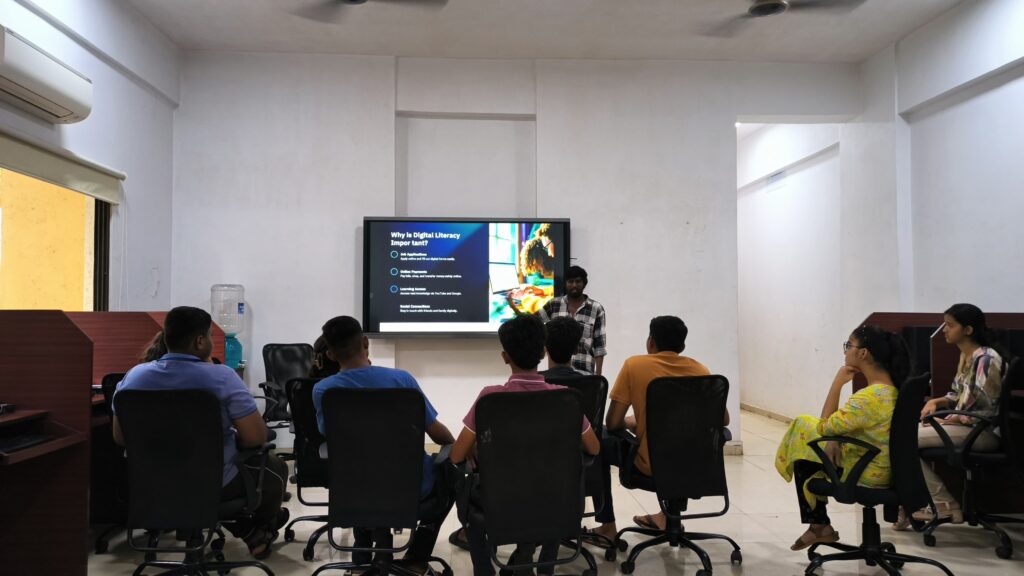
Let’s face it — the Indian education system is broken.
We’ve built a machine that rewards rote memorization, punishes curiosity, and churns out students who can recite textbook definitions but struggle to solve real-life problems. We call it “learning,” but what we really mean is “cramming.”
I believe we can do better.
In fact, I believe the real solution is already here — inside our communities, inside our homes, and inside our children’s innate curiosity. All they need is the right environment, a little support, and the freedom to learn for themselves.
That’s why I want to fund a national network of Community Microschools and Digital Learning Pods — led by grassroots entrepreneurs — to transform how we think about education in India.
My Core Belief: Every Child Can Learn — If We Let Them
You don’t need an elite school or expensive coaching to be a successful learner. You need the right tools, a safe space, and a little encouragement.
We’ve seen this firsthand at www.apnipathshala.org, where we’ve already helped launch over 70 pods across India. Kids who had never touched a computer before are now exploring AI tools, watching science videos, and helping each other solve real math problems.
This is not just a dream. It’s already happening.
And now, we want to take it nationwide.
Here’s What This Vision Looks Like
✅ 1. A Self-Sustaining Ecosystem
Each center will be equipped with an affordable educational PC (the APNA PC) loaded with high-quality open-source content and an AI tutor. Kids learn at their own pace, ask questions freely, and support each other through peer-to-peer learning.
But technology alone isn’t enough. That’s why we’ll create online communities where facilitators and learners across India can connect, share, and grow together.
✅ 2. Local Champions at the Helm
These centers will be run by micro-entrepreneurs: parents, senior citizens, retired teachers, or young graduates who are respected and trusted in their own communities.
This local leadership ensures that:
- The learning stays relevant.
- The center stays sustainable.
- The children stay safe.
✅ 3. Transparent, Public Progress
Each center will have its own public webpage, showcasing student projects, success stories, and testimonials. This makes growth transparent and scalable — others can replicate what works, and we all learn together.
✅ 4. Real Academic Results
We’ll use a flipped classroom model to help kids master school content faster and deeper. They’ll prepare using their APNA PCs, and clarify doubts using online resources or in small groups. This approach outperforms the current system of expensive tuitions.
The goal? Replace commercial coaching classes with something better, cheaper, and more meaningful.
✅ 5. Quality + Affordability = True Impact
Community microschools deliver 10x learning at 1/10th the cost. With no commute, a safe learning space, and tech-enabled self-learning, this model is tailor-made for India.
Why This Matters
This isn’t just about fixing education.
It’s about shifting mindsets — from scarcity to abundance.
From:
“Only a few can succeed”
To:
“Every child can succeed — if given the right opportunity.”
This is how we unlock a generation of thinkers, makers, coders, designers, and entrepreneurs — not just obedient test-takers.
And the best part? We’re going to open-source this entire model — so anyone, anywhere in India, can adopt it.
Yes, There Will Be Challenges
Let’s be honest. This won’t be easy. Here are some roadblocks we expect:
❌ 1. PCs ≠ Instant Learning
Just giving a child a computer doesn’t make them a genius. That’s why our model emphasizes mentorship, motivation, and peer learning. The computer is a tool — not a teacher.
❌ 2. Cultural Inertia
In India, “tuition” is often seen as the only way to succeed. Parents will need to see results — which we’re confident we’ll deliver — before they change their minds.
❌ 3. The “No Teacher?” Problem
Many parents are uncomfortable with the idea of a “teacher-free” classroom. But our experience shows that students actually thrive when given control over their learning — supported by AI tutors and structured content.
We’ve already addressed these challenges in our Apni Pathshala pods. And we’re refining the model every day.
Why Charge a Fee?
Some people ask — why not make these centers free?
Because what is free is often undervalued.
A small, affordable fee makes the model sustainable. It creates a sense of ownership — both for parents and facilitators. And it removes the dependency on endless donations or grants.
This isn’t charity. It’s empowerment through entrepreneurship.
Now It’s Time to Scale
The model works. The impact is clear. Now it’s time to go national.
I’m looking for bold, mission-driven social entrepreneurs who want to bring this vision to life in their own communities — and eventually across the country.
If you’re serious about transforming education, I want to fund you.
What I’m Looking For
If you want to join this revolution, here’s what I need from you:
📩 Email me at malpani@malpaniventures.com with:
- Your 3-year action plan
- A clear timeline
- A detailed budget
- How you’ll implement and scale this model in real life
- What success will look like in your context
Final Thoughts: This is Our Bet on India’s Future
This might fail. It’s an experiment.
But that’s how progress works — by trying boldly, learning in public, and scaling what works.
I’m placing my bet on India’s students — on their drive, their curiosity, and their potential.
Let’s stop waiting for the system to fix itself. Let’s build a better one, together.
👉 Start your own community microschool today.
Visit www.teachtoearn.in and join the movement.